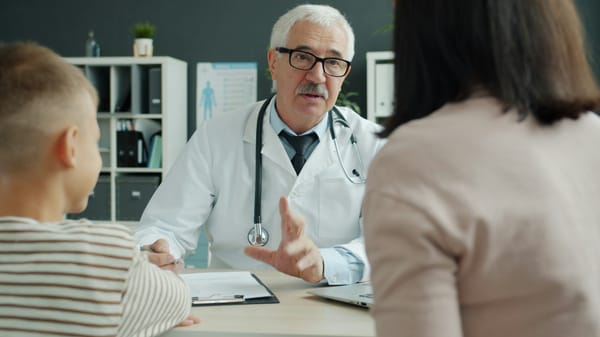The AMR Pandemic: Preventing a Post-Antibiotic World with Targeted Inventions

Antimicrobial resistance (AMR) is a pressing global health issue that threatens to undo decades of progress in medicine. The Lancet, a peer-reviewed medical journal highlights the urgent need for coordinated global action to address the AMR crisis. The Lancet has published several series and articles on combating AMR. These series typically include research papers, reviews, and commentary that address various aspects of antimicrobial resistance, such as its global burden, the impact on different populations, the effectiveness of interventions, and strategies for prevention and control. This post outlines the burden of AMR, current interventions, and future directions to mitigate its impact.
The Burden of AMR
Antimicrobial resistance (AMR) represents a dire threat to global health, reversing decades of medical advancements. The 2022 study on AMR's impact underscores the alarming reality, estimating nearly 5 million deaths annually due to drug-resistant bacteria. This burden is disproportionately higher in low- and middle-income countries (LMICs), where healthcare infrastructure often falls short in combating such threats.
The economic ramifications are equally staggering, with treatment costs pegged at $412 billion each year and productivity losses reaching $443 billion. The human cost of AMR is profound, affecting vulnerable populations such as newborns, the elderly, and those with chronic conditions, thereby hindering progress towards the Sustainable Development Goals (SDGs), particularly those related to health, well-being, and poverty alleviation.
The substantial financial burden exacerbates the strain on already limited resources in LMICs, creating a vicious cycle that hinders economic development and healthcare improvements. Addressing AMR requires a multifaceted approach that not only targets the medical and scientific aspects but also considers the socioeconomic factors that contribute to its prevalence. The data underscores the necessity for urgent, coordinated global action to mitigate this escalating crisis, emphasizing that the cost of inaction far outweighs the investment needed for effective interventions.
Current Interventions and Their Impact
Effective interventions against AMR are crucial to mitigating its widespread impact. Infection prevention and control (IPC) programs, access to clean water, sanitation, and hygiene (WASH), and vaccination initiatives have demonstrated significant potential in reducing AMR-related mortality. Modeling analyses suggest that these interventions could prevent over 750,000 AMR-associated deaths annually in LMICs.
IPC practices in healthcare settings are essential for minimizing the spread of infections, thereby reducing the need for antibiotics and slowing the development of resistance. Robust evidence supports the critical role of WASH services in preventing infections by improving public health infrastructure, which is particularly vital in resource-limited settings. Vaccinations, such as those against pneumococcal and rotavirus infections, not only prevent diseases but also reduce the reliance on antibiotics, further curbing resistance.
The implementation of these interventions requires a coordinated effort across various sectors, including public health, infrastructure, and education. Success stories from different regions highlight the effectiveness of a holistic approach, demonstrating that significant progress can be made with the right strategies and sufficient political will. These interventions, while currently underutilized, offer a tangible pathway to mitigating the global AMR burden, highlighting the importance of investing in proven public health measures.
The Need for Universal Access and Innovation
Universal access to effective antibiotics and the innovation of new treatments are pivotal in the fight against AMR. However, LMICs face substantial challenges in accessing these vital resources. Despite a notable increase in global funding for antibiotic research and development, barriers to access remain significant in these regions.
The development of new antibiotics must prioritize affordability and accessibility, ensuring that advancements in treatment reach those who need them most. Current data indicate a lack of concrete commitments to register new antibiotics in LMICs, coupled with inadequate funding for diagnostic tests and vaccines targeting priority drug-resistant pathogens.
This disparity underscores the need for a paradigm shift in the pharmaceutical industry and global health policies. International collaborations and funding mechanisms should be strengthened to support the distribution and affordability of new antibiotics in LMICs. Additionally, fostering local production and capacity-building initiatives can help bridge the gap in access. The global health community must advocate for policies that facilitate equitable access to life-saving treatments and encourage innovation that addresses the unique challenges faced by LMICs. Ensuring universal access to effective antibiotics is not just a moral imperative but a critical component of a comprehensive strategy to combat AMR globally.
The Role of Political Commitment and Multisectoral Action
Addressing AMR effectively requires robust political commitment and coordinated multisectoral action. The upcoming UN high-level meeting on AMR aims to galvanize global, regional, and national efforts to combat this pressing threat.
Political leaders must prioritize AMR on their agendas, recognizing it as a critical global health issue that demands immediate attention. Multisectoral collaboration is essential, involving stakeholders from human health, animal health, agriculture, and environmental sectors. This "One Health" approach acknowledges the interconnectedness of these domains and the necessity of a unified strategy.
Robust and actionable data are crucial for driving policy changes and informing effective interventions. Comprehensive surveillance systems must be established, covering all geographical regions and minimizing biases towards hospital-derived data. These systems should also include non-human niches to provide a holistic view of AMR dynamics. The political declaration from the high-level meeting will be judged by its implementation, not just its words.
Therefore, strong commitments, backed by actionable plans and adequate funding, are essential. Governments, international organizations, and the private sector must work together to achieve the ambitious global targets proposed, such as reducing the AMR burden by 10% by 2030. The success of these efforts will hinge on the political will to implement evidence-based policies and the ability to adapt strategies to the unique needs of different regions.
Future Directions and Targets
Future directions in combating AMR must focus on achieving the ambitious yet achievable global targets outlined by the Lancet Series, particularly the goal of reducing the global AMR burden by 10% by 2030. This requires a concerted effort to resolve the differing needs and priorities of high-income, middle-income, and low-income countries.
A key aspect of future strategies involves strengthening the implementation and funding of national action plans. While 178 countries have developed such plans, fewer than a fifth are adequately funded or implemented. International collaboration and financial support are crucial to bridge this gap. Additionally, fostering innovation in antibiotic development and ensuring equitable access to these innovations in LMICs is paramount.
This includes supporting local production capabilities and enhancing the global distribution network. The integration of robust surveillance systems will provide the necessary data to drive informed policy decisions and measure progress effectively. Moreover, a multisectoral approach that incorporates human, animal, and environmental health perspectives will be essential to address the complex nature of AMR. The global community must commit to sustained investment in public health infrastructure, research, and education to build resilience against AMR.
The upcoming UN high-level meeting presents a critical opportunity to reinforce these commitments and set a clear path forward. By embracing a unified and comprehensive approach, we can mitigate the impact of AMR and safeguard public health for future generations.
Overcoming Struggles: A Real Testimonial on the Frontlines of AMR
Dr. David Warren, an infectious disease specialist at Washington University Hospital, has made significant contributions to the fight against AMR. His team faced a high incidence of mupirocin-resistant Staphylococcus aureus, a challenge that complicated the treatment of patients with MRSA. Through rigorous implementation of infection prevention protocols and stewardship programs, Dr. Warren's efforts reduced the spread of resistant infections. His research, published in 2007, documented that 13.2% of MRSA isolates were mupirocin-resistant, highlighting the need for continuous surveillance and innovative treatment approaches to manage AMR effectively (GenNews) (BioMed Central).
For further detailed and authentic testimonials, reviewing reports and publications from organizations like the World Health Organization (WHO) and national health security agencies can provide verified accounts of efforts and successes in the battle against antimicrobial resistance (World Health Organization WHO) (UK Health Security Agency Blog).
Your Top Questions Answered
What is antimicrobial resistance (AMR)?
AMR occurs when microorganisms such as bacteria, viruses, fungi, and parasites evolve to resist the drugs designed to kill them. This makes common infections harder to treat, leading to prolonged illness, higher healthcare costs, and increased mortality. For example, resistance rates for E. coli and methicillin-resistant Staphylococcus aureus (MRSA) are increasing, complicating treatment protocols. Effective treatments for infections become limited, posing a significant threat to public health worldwide.
Why is it important to complete a prescribed antibiotic course?
Even if symptoms improve, stopping antibiotics early can leave some bacteria alive, which can become resistant to the treatment. This can cause the infection to return and make it harder to treat with standard antibiotics in the future. Completing the full course ensures all bacteria are eradicated, reducing the risk of resistance development and safeguarding the efficacy of antibiotics for future use.
Do antibiotics work on viral infections like the common cold or flu?
No, antibiotics are effective only against bacterial infections. The common cold and flu are caused by viruses, so antibiotics will not work and should not be used. Misusing antibiotics for viral infections contributes to the development of resistance, making bacterial infections harder to treat. Understanding this distinction helps reduce unnecessary antibiotic use, preserving their effectiveness
How can we prevent infections with resistant bacteria?
Preventing infections involves practices such as regular hand washing, vaccination, safe food handling, and proper cough etiquette. These measures reduce the need for antibiotics and help prevent the spread of resistant bacteria. Implementing robust infection prevention protocols in healthcare settings and promoting public awareness are crucial steps in combating AMR on a global scale.
How does antibiotic resistance affect healthcare settings?
Antibiotic-resistant bacteria, often referred to as "superbugs," can survive on surfaces in healthcare facilities and cause healthcare-associated infections (HAIs). These infections are harder to treat and can spread rapidly within hospitals, making infection control and surveillance crucial in these settings. Effective measures include strict hygiene protocols, regular screening for resistant strains, and appropriate antibiotic stewardship to minimize resistance development.
Conclusion
The Lancet Series on AMR underscores the significant global health threat posed by antimicrobial resistance, particularly in low- and middle-income countries (LMICs) where the burden is greatest. Key points from the series highlight the human and economic costs of AMR, the necessity of robust infection prevention and control (IPC) measures, the importance of access to safe water, sanitation, and hygiene (WASH), and the crucial role of vaccines in reducing antibiotic use.
The series advocates for a coordinated global response that spans human, animal, and environmental health sectors. The upcoming UN high-level meeting on AMR provides a pivotal opportunity to set and achieve global targets aimed at mitigating AMR and enhancing food security.
It is imperative that healthcare professionals, researchers, and policymakers prioritize AMR as a critical global health issue. Immediate and sustained action is needed to implement effective IPC programs, ensure universal access to WASH, expand vaccination coverage, support the development of new antibiotics, and establish comprehensive surveillance systems. These measures are vital to reducing the global AMR burden and safeguarding public health for future generations.
Key Takeaways
- Burden of AMR: Nearly 5 million deaths annually are due to drug-resistant bacteria, with significant economic costs, particularly in LMICs.
- Economic Impact: AMR results in $412 billion in treatment costs and $443 billion in productivity losses annually, heavily burdening healthcare systems.
- Infection Prevention and Control: Improving IPC programs, WASH access, and vaccination can prevent over 750,000 AMR-associated deaths annually in LMICs.
- Research and Development: New antibiotics are essential but must be affordable and accessible, especially in LMICs, where commitments are lacking.
- Global Coordination: AMR requires a coordinated approach across human, animal, and environmental health sectors to set and achieve global targets.
- Surveillance and Data: Robust data and comprehensive surveillance are crucial for effective AMR interventions, covering all regions and minimizing biases.
- Universal Access: Ensuring universal access to effective antibiotics and WASH services is critical to combating AMR, particularly in resource-limited settings.
- Political Commitment: Strong political commitment and multisectoral action are necessary to address AMR, supported by global meetings and national action plans.
- Economic Burden: The substantial economic burden of AMR necessitates urgent investment in public health interventions with the greatest potential impact.
- Healthcare Inequalities: Addressing AMR also means tackling healthcare inequalities, ensuring all populations have access to necessary treatments.
- Public Awareness: Raising public awareness and promoting antibiotic stewardship are vital in reducing unnecessary antibiotic use and preventing resistance.
Thank you for reading this post!
If you found it helpful or informative, please consider sharing a 7 day free trial with your friends, family, or colleagues who might benefit from it.
Your support helps me reach more people and spread awareness on important topics like this. Together, we can make a difference!
References
[The Lancet Series on Antimicrobial Resistance] https://www.thelancet.com/series/antimicrobial-resistance
[WHO - Antimicrobial resistance] https://www.who.int/news-room/fact-sheets/detail/antimicrobial-resistance
[CDC - Antimicrobial Resistance Solutions Initiative] https://www.cdc.gov/drugresistance/solutions-initiative/index.html
[Drugs.com - Antibiotic Resistance: The Top 10 List ]https://www.drugs.com/article/antibiotic-resistance.html
[FDA - Antimicrobial Resistance Information] https://www.fda.gov/drugs/drug-safety-and-availability/antimicrobial-resistance-information-fda
[Genetic Engineering & Biotechnology News - Overcoming Antimicrobial Resistance] https://www.genengnews.com/topics/drug-discovery/overcoming-antimicrobial-resistance/
[BMC Infectious Diseases - Strengthening antimicrobial resistance surveillance systems: a scoping review] https://bmcinfectdis.biomedcentral.com/articles/10.1186/s12879-019-4485-1
[Minnesota Department of Health - Frequently Asked Questions About Antimicrobial Use and Resistance] https://www.health.state.mn.us/diseases/antibioticresistance/faqs.html
[UK Health Security Agency - The fight against antimicrobial resistance: progress and challenges] https://ukhsa.blog.gov.uk/2023/11/15/the-fight-against-antimicrobial-resistance-progress-and-challenges/
[Drugs.com - Antibiotic Resistance: The Top 10 List] https://www.drugs.com/article/antibiotic-resistance.html
[Nature - Antimicrobial resistance: the silent pandemic]https://www.nature.com/articles/d41586-021-01026-9
[Global AMR R&D Hub - Resources on AMR](https://globalamrhub.org/resources/
[Harvard T.H. Chan School of Public Health - Combating Antibiotic Resistance] https://www.hsph.harvard.edu/news/hsph-in-the-news/combating-antibiotic-resistance/




